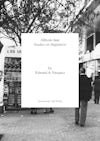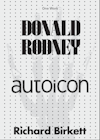Content
Philip Guston’s The Studio (1969) depicts a member of the Ku Klux Klan painting a self-portrait. Darkly comic, crude and complex The Studio is a key work in Guston’s shift from abstract expressionism to his late figurative style.
In this generously illustrated book Craig Burnett examines Guston’s engagement with the history and limitations of painting during the last decade of his life. Burnett reflects that The Studio signals not only a broader historical moving away from the medium-centric claims of modernist abstraction but also a personal shift to subject matter that was discursive, playful and carnivalesque. The Studio’s existential ‘play of self’ and ‘Kierkegaardian despair’ is counterbalanced by the lure of compositional coherence to be found within paintings by artists such as Piero della Francesca, among others. Finally Burnett focuses on ‘a passage of supreme poetry’, the column of smoke central to The Studio, its importance as a compositional device and its presence as a ghost of abstraction.




